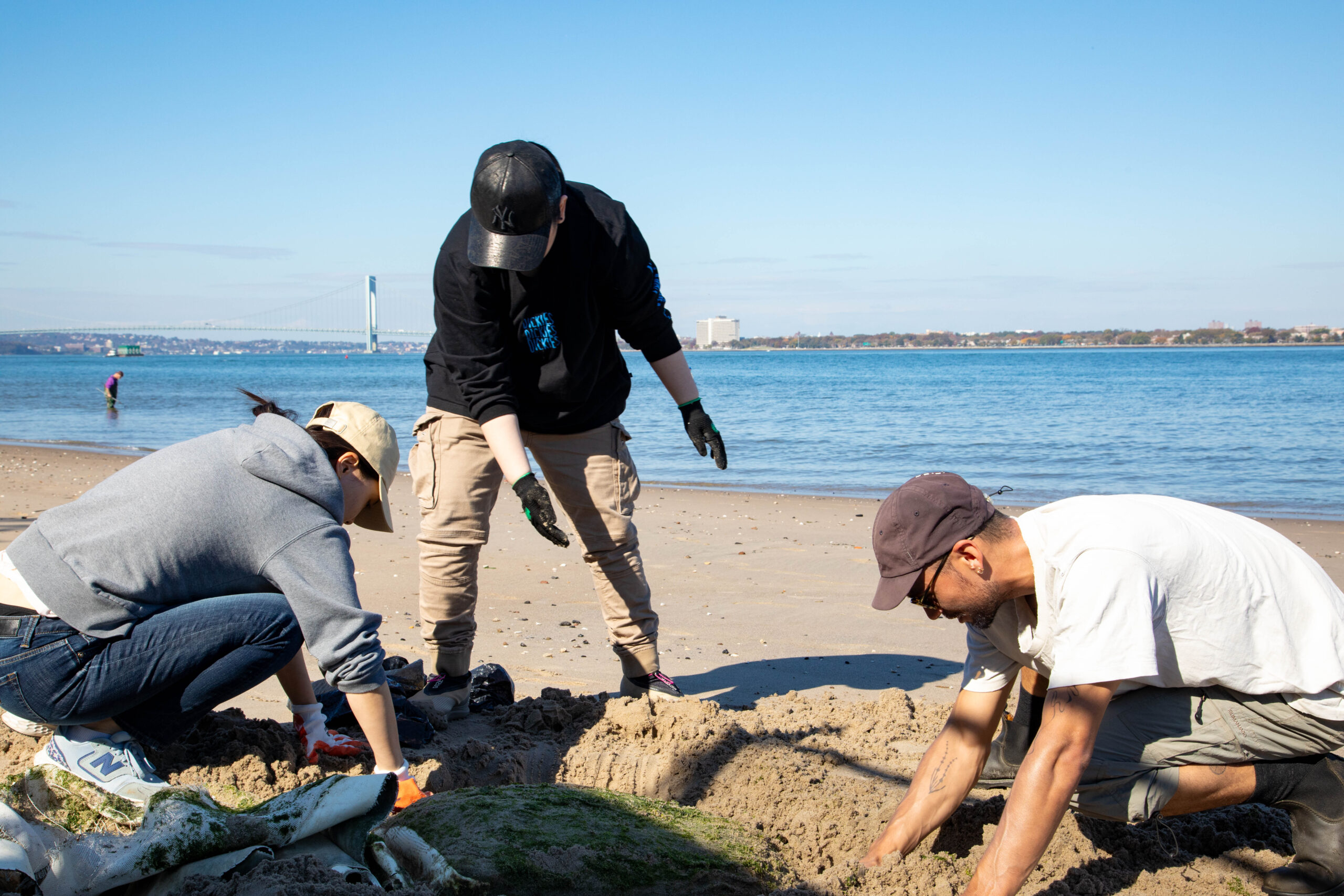On a warm and sunny Saturday afternoon, Pratt students, faculty, and staff gathered at Coney Island’s Creek Park Shore to pick up trash that would otherwise get carried by the wind or tides into the Atlantic Ocean.
The garbage was classified by the type—lids, bottles, cigarette butts—with the data sent to the Ocean Conservancy and New York Littoral Society for advocacy efforts. The world’s oceans face huge challenges, from rising temperatures and acidification to overfishing and pollution, but small community interventions like this are key to understanding the problems, building coalitions, and spurring environmental protections.
“When you start to pick up this trash and you see how much is collected in an hour or two, it really brings home the question of your own personal stewardship,” said Ira Stern, adjunct associate professor in the Graduate Center for Planning and the Environment. “It gets students thinking about what they would do as future environmental managers or planners, how they would help to eliminate trash in waterways.”
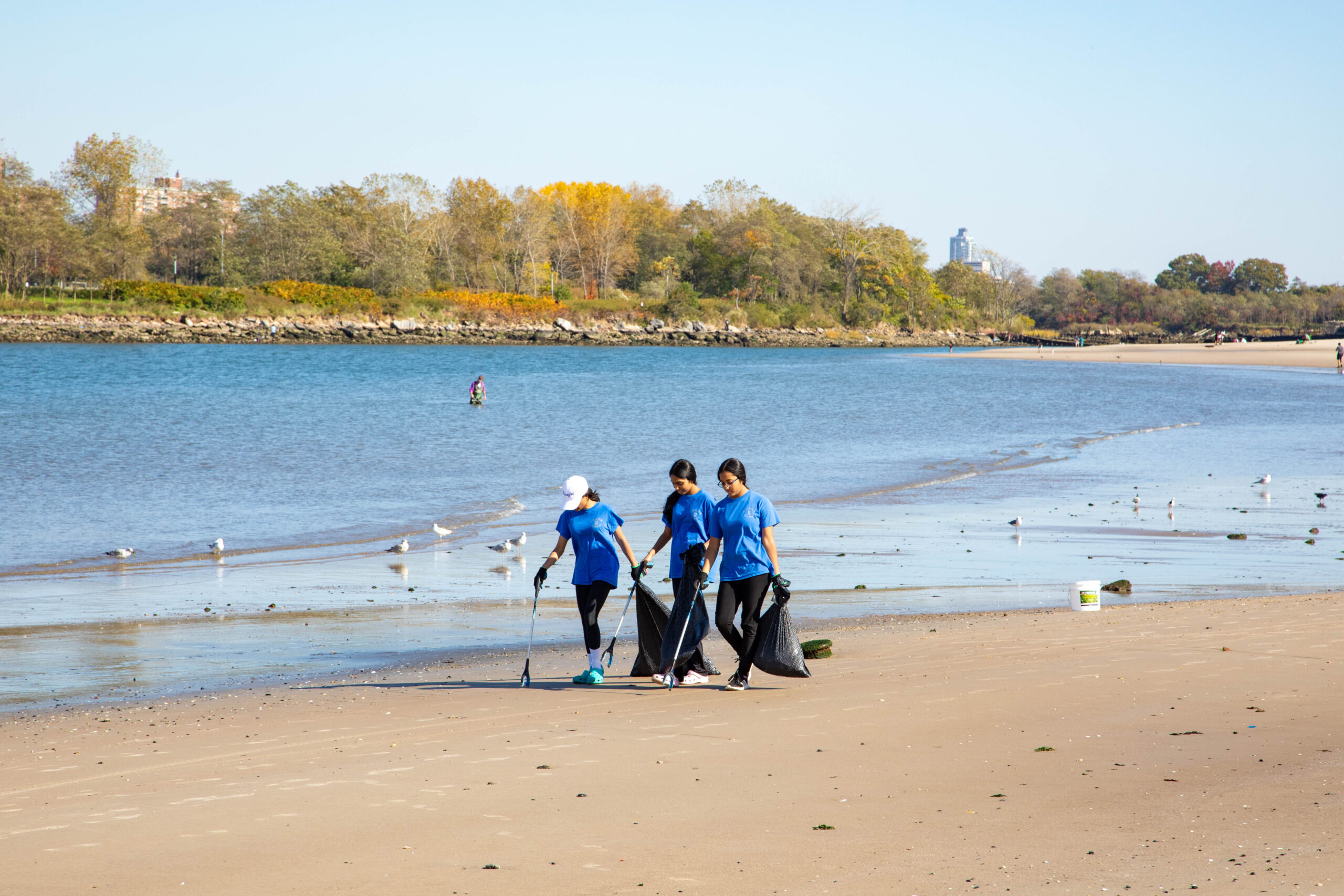
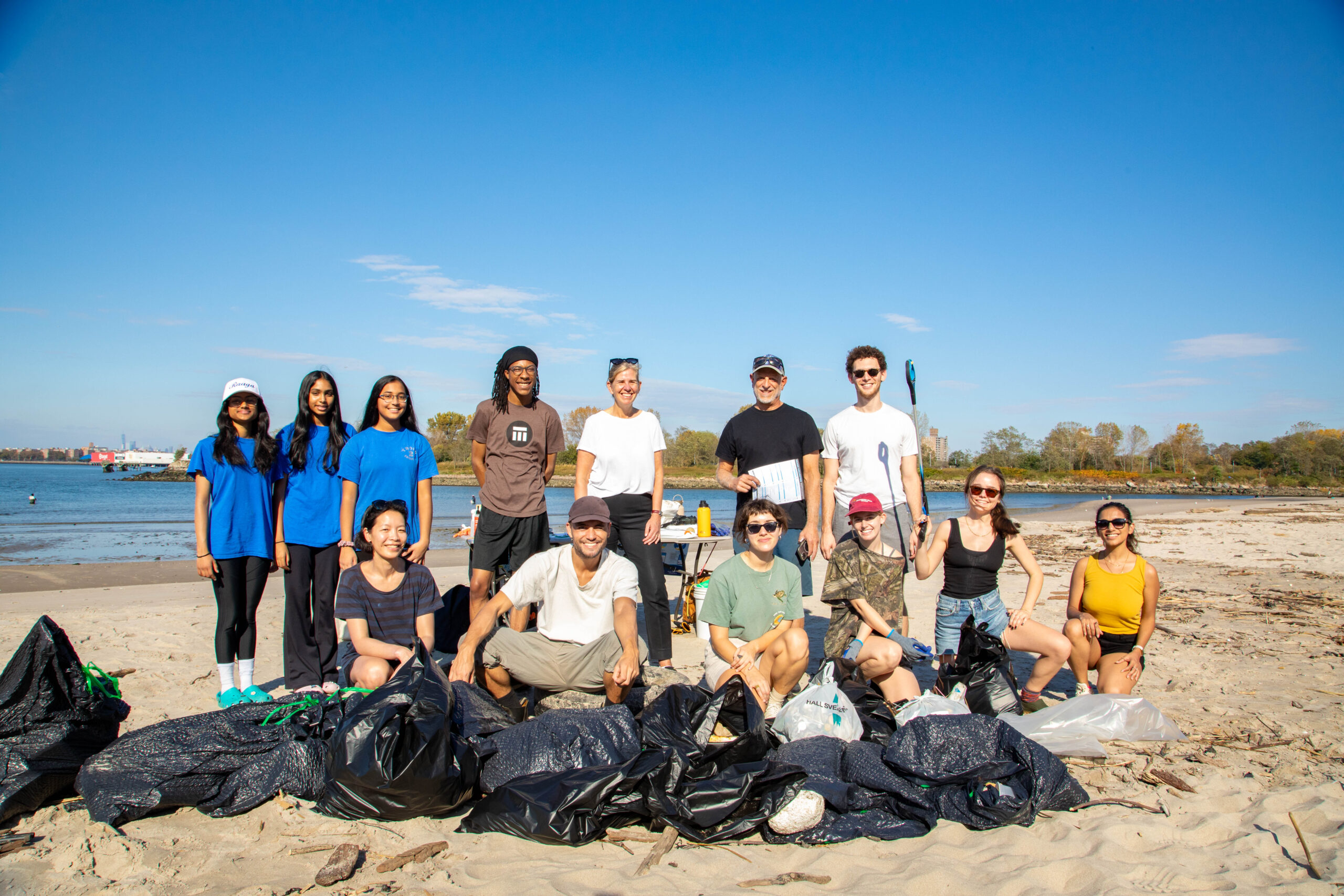
Graduate students in Stern’s Watershed Planning studio took the lead in organizing the clean-up—learning important lessons in event planning, data collection, and movement building—as part of Pratt Earth Action Week, a mix of academic presentations, panel discussions, workshops, and hands-on activities created by the Pratt Sustainability Center to highlight ongoing sustainability efforts by students, faculty, and staff.
“We’re celebrating the action that’s happening at Pratt, the work that’s being generated, and also providing opportunities for people to feel empowered as individuals to make change,” said Carolyn Shafer, director of the Pratt Sustainability Center. “We’re an art, design, and architecture school. Our students are going to make the stuff in the world and we have to make sure they’re grounded in principles of sustainability.”
The weeklong series of events is part of a much larger commitment to environmental action at Pratt, which coordinates and develops resources to further integrate sustainability into the academic experience of all students. In September, Pratt received an AASHE STARS Gold rating from the 2023 AASHE Sustainable Campus Index (SCI), ranking in the top 10 for overall performance among schools that award graduate degrees. Pratt received particularly high marks for campus engagement, curriculum, and research, areas that were displayed throughout Pratt Earth Action Week.
The beach clean-up exemplified how the week, which takes place in both fall and spring semesters and attracts local community members, is informed by and contributes to the work being done in classrooms. Many students in Stern’s course are studying plans by the Army Corps of Engineers to mitigate flooding along New York’s coastal areas, including Coney Island.
“Coney Island Creek is a natural creek that originates somewhere, it has a drainage area, it involves land use, it has pollutant sources, it has a wastewater treatment plant,” Stern said. “It’s a microcosm of the issues that students are engaging with.”
Pratt Earth Action Week emphasized the intersectional nature of sustainability overall, how it cuts across industries and encompasses issues of race, class, and culture. In the Sustainability Is a Racial Justice Issue panel, Chelsea Grays, assistant professor of fashion, and Kimberly M. Jenkins, founder of The Fashion and Race Database and former visiting assistant professor of fashion at Pratt, described how labor and waste management practices in the fashion industry disproportionately harm Black and Brown communities worldwide.
Grays and Jenkins invited attendees to move away from fast fashion by buying less clothes and supporting brands with ethical sourcing and labor practices, a theme that was picked up in different workshops encouraging students to think about how they can reuse, repair, and share clothing. The student group Envirolutions hosted a clothing swap, while the Style over SHEIN: Choosing Memories Over Materialism event helped participants reconnect with the clothes they already owned.
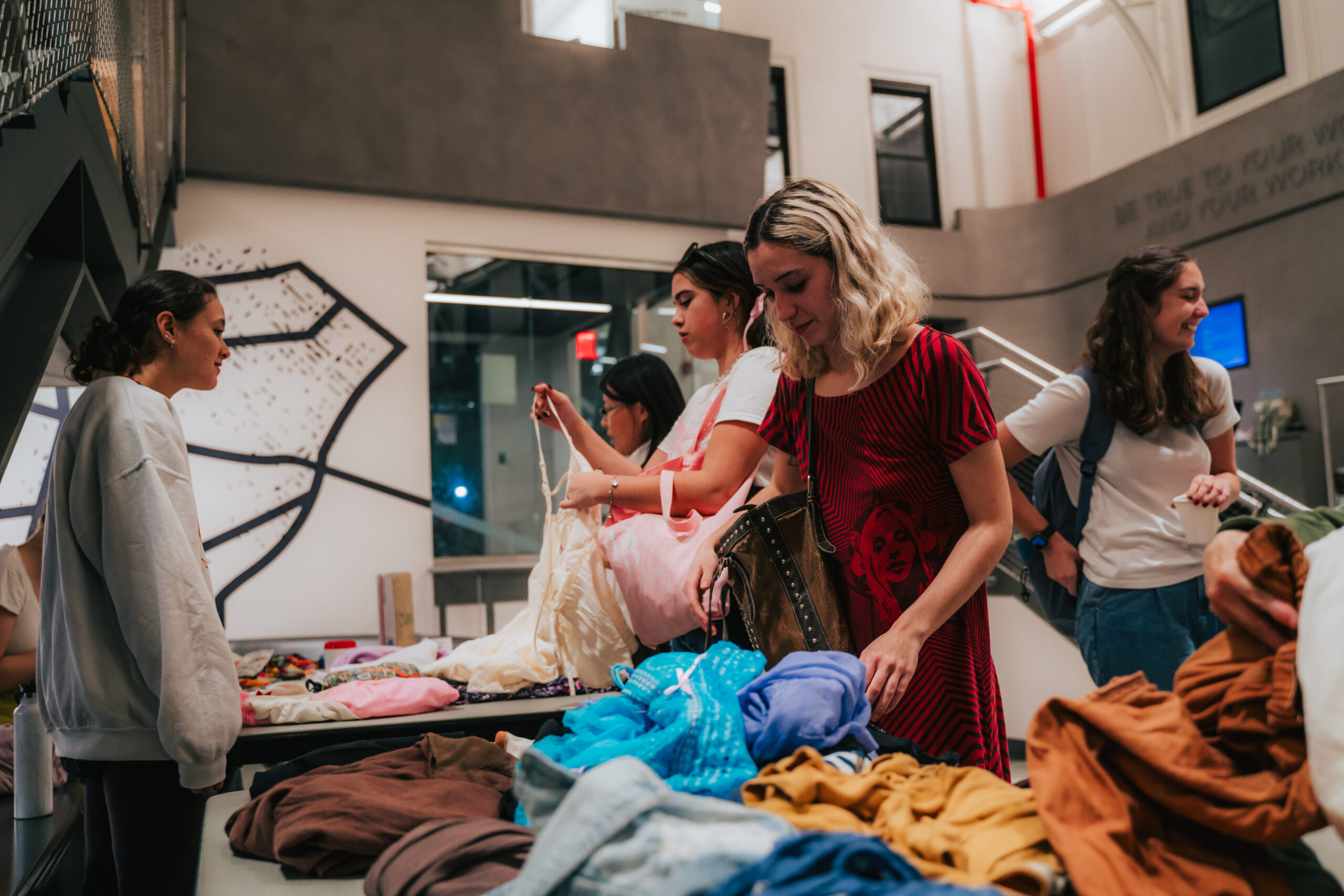
The graduate student-run Leaders of Environmental Action at Pratt (LEAP) guided a group writing letters in support of a state-wide effort to designate community gardens as Critical Environmental Areas (CEAs). This campaign has been championed by members of the Pratt community, including Raymond Figueroa, GCPE professor and New York City Community Garden Coalition (NYCCGC) president, who was on hand to talk about the CEA initiative.
Over the course of the week, students learned how to propagate plants and navigate the urban trails of Brooklyn. They wrote poems that imagined better futures and planted them with seeds in the Pratt Textile Dye Garden’s newly launched Writer’s Plot.
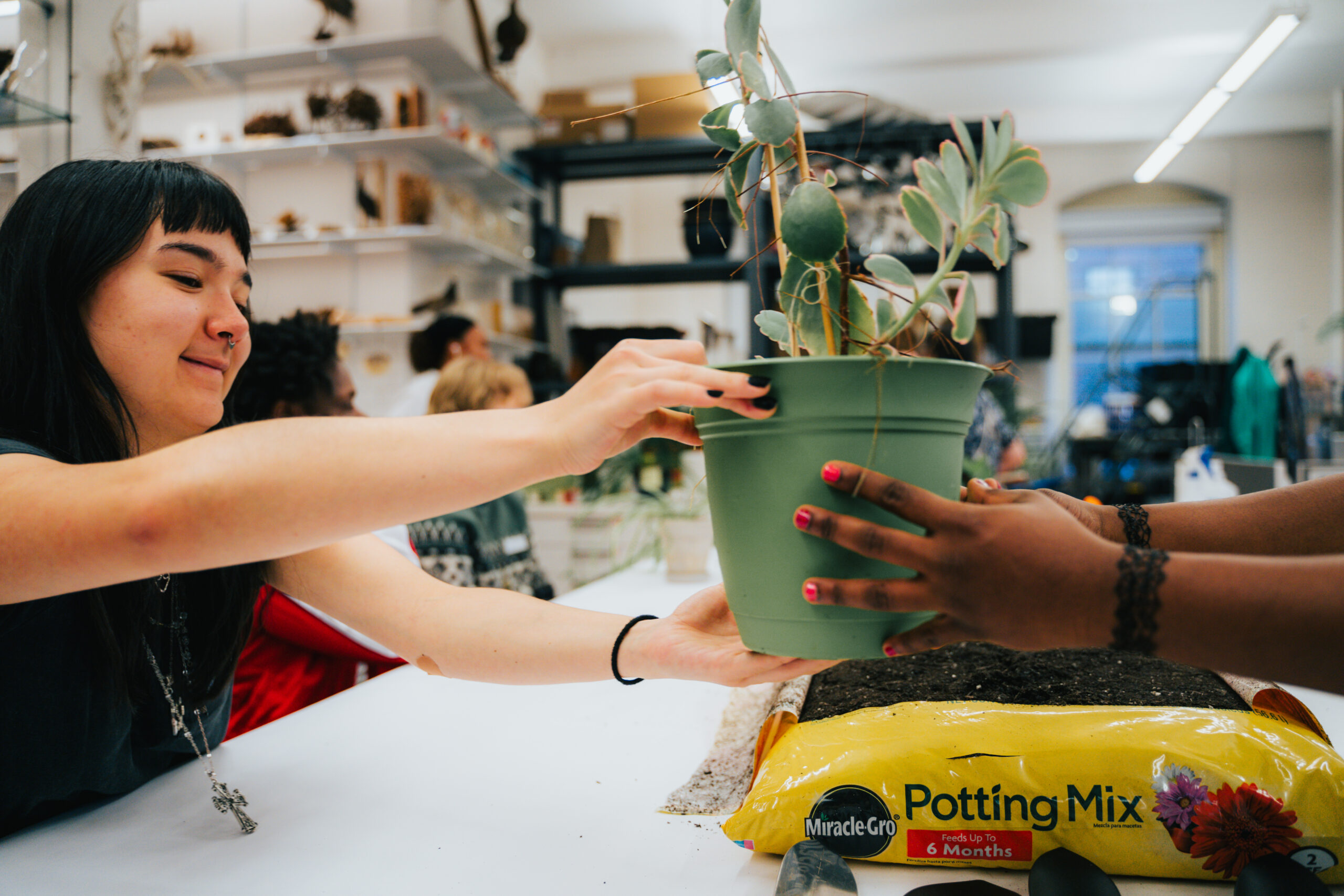
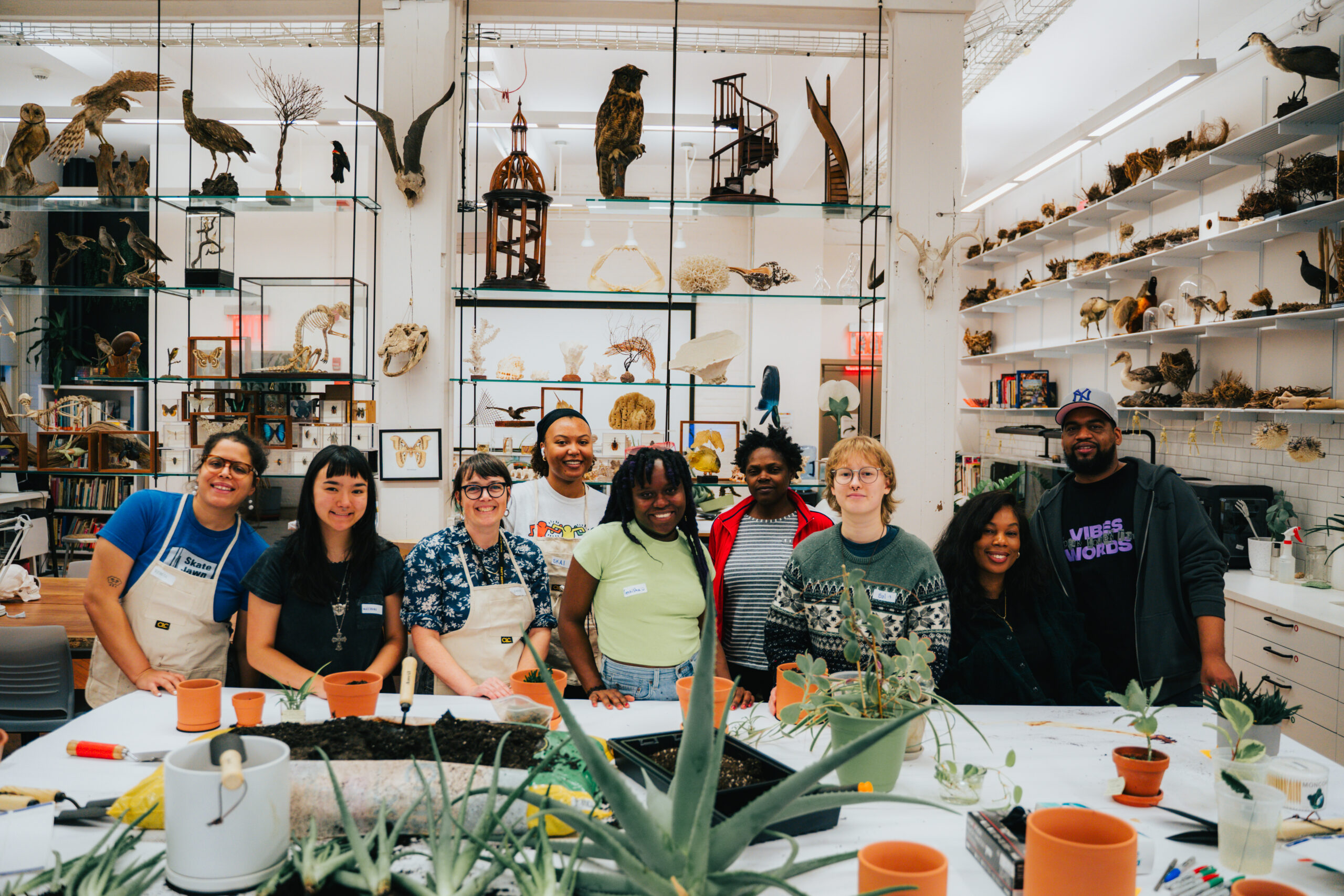
“As a group, we generated affirmations, dreams, and hopeful manifestations, using prompts from professor Laura Elrick,” said Natalie Helsel, BFA Writing ‘25, who helped organize the event in the Textile Dye Garden. “We wrote them onto the paper and planted them into the soil. Hopefully, new flowers will grow from the seed paper.”
“I hope that while interacting with the paper-making process, everyone who attended the event was inspired by the opportunity to repurpose items that we might have just thrown away,” she said.
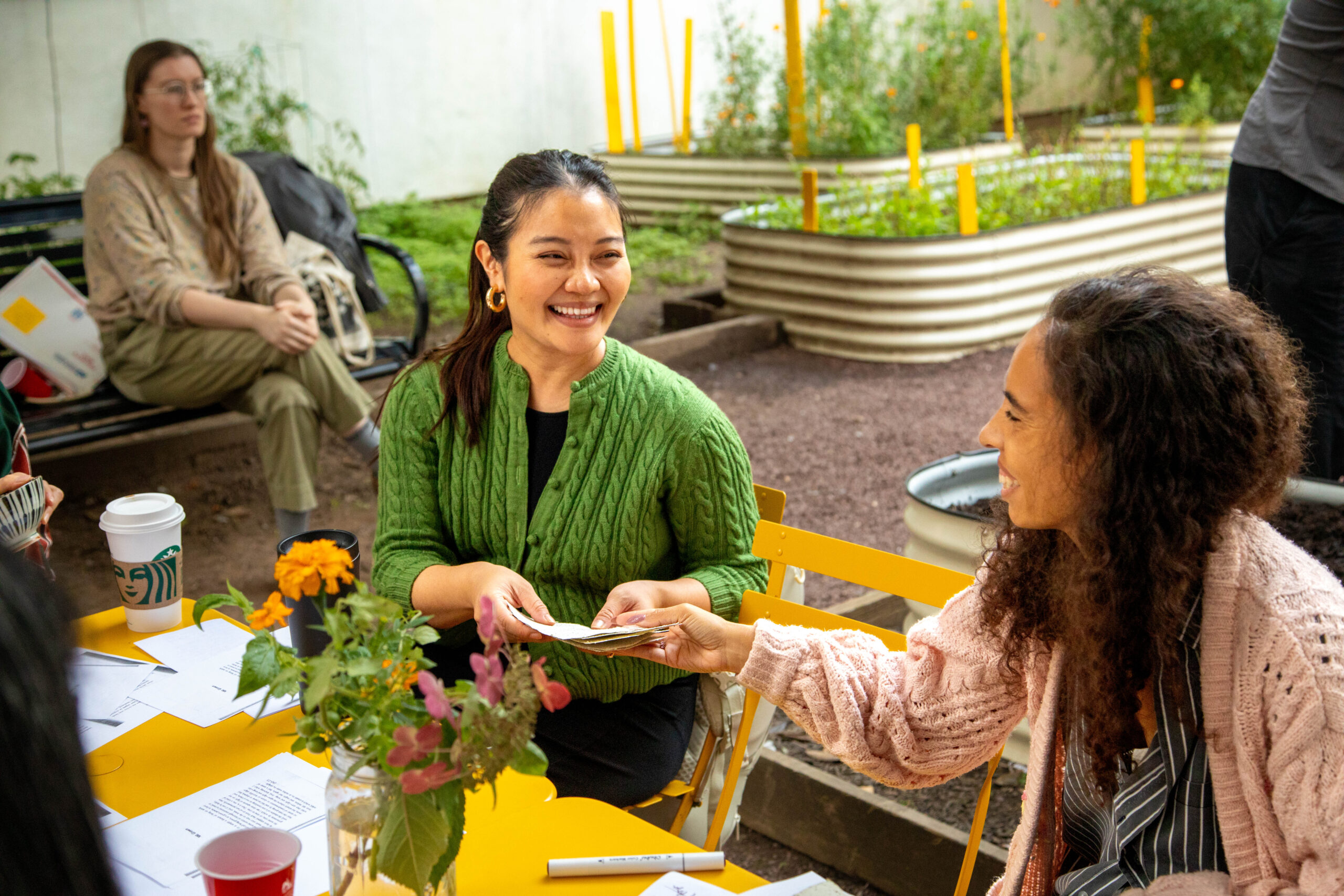
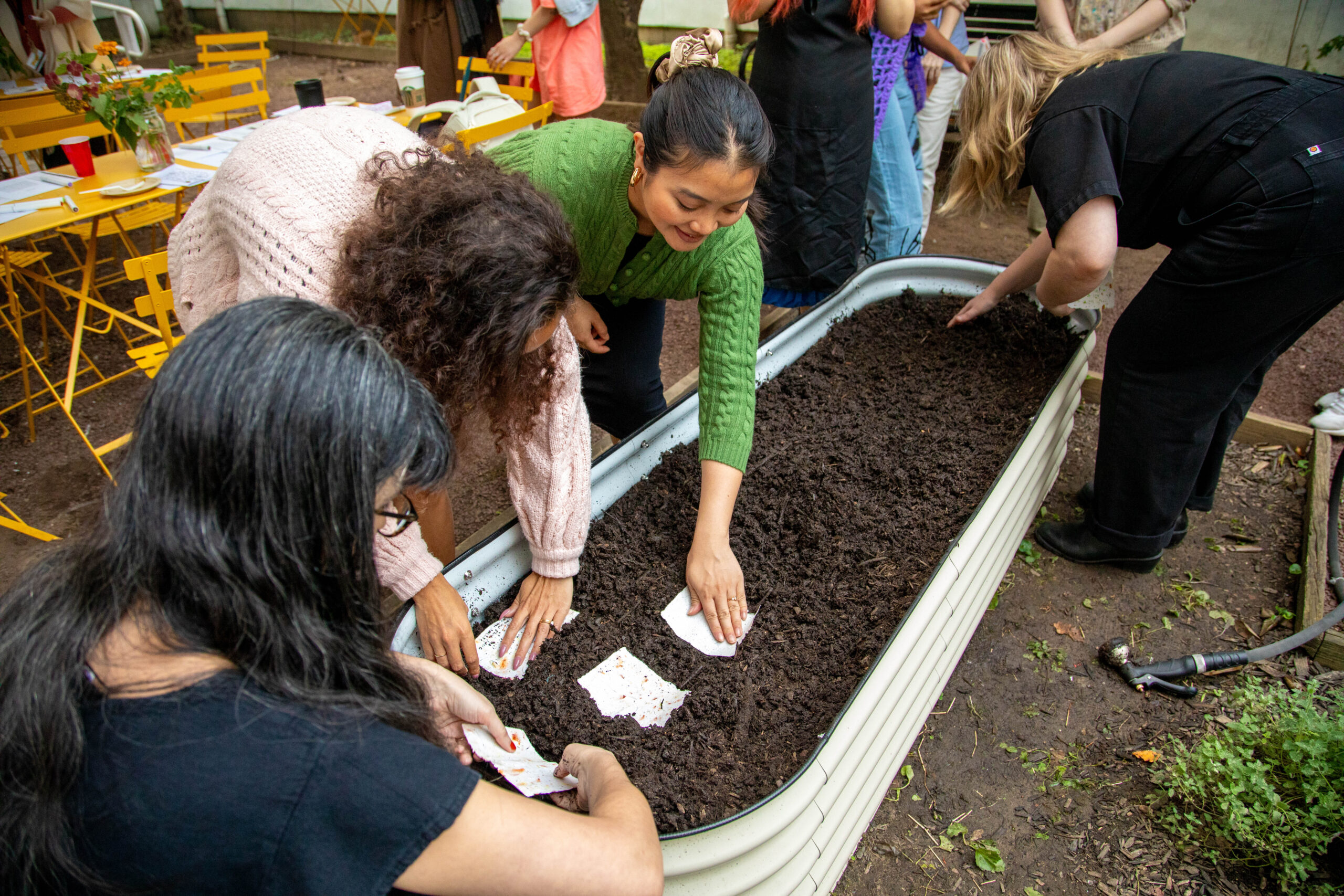
An in-person workshop allowed students, faculty, and community members to think about how the Alaska Native community of Quinhagak could adapt to escalating climate risks through hydroponic systems and greenhouses.
The Creative Enterprise Leadership Program shared award-winning capstone projects from last spring including a solar-powered aquaculture hatchery, an AI program for collecting and reporting ESG data, and a consultancy focused on indigenous cultural preservation, as well as work-in-progress capstone projects inspired by the United Nations’ Sustainable Development Goals.
The challenges facing the planet are daunting, but Pratt Earth Action Week shows that if you patiently observe local ecology, get your hands a little dirty, and connect with your neighbors, the path to meaningful action becomes more clear. The momentum, ideas, and connections made during the week will be championed by Pratt’s environmental student groups and Departmental Sustainability Coordinators, incorporated into studios, research projects, and events, and built upon during the next Pratt Earth Action Week.
“Environmental sustainability is about social and cultural issues as well as human health,” Shafer said. “As educators and artists and designers we need to set students up for success by addressing sustainability in a comprehensive way, both generally through gen-ed courses but also specifically through the lens of each single discipline we teach here.”
